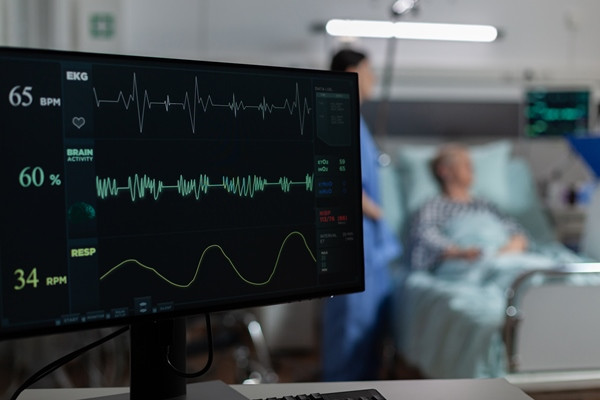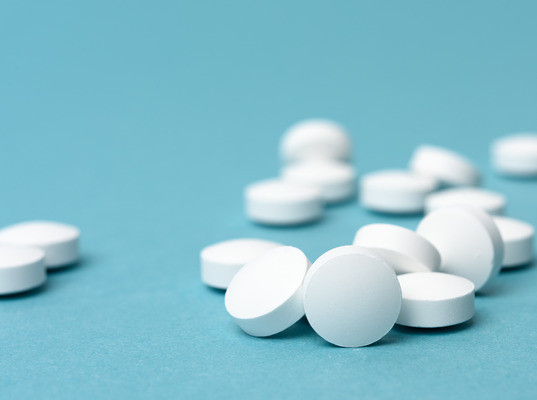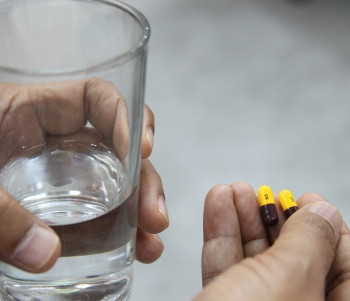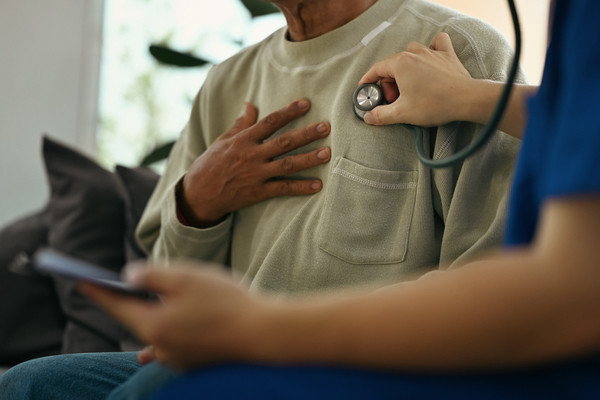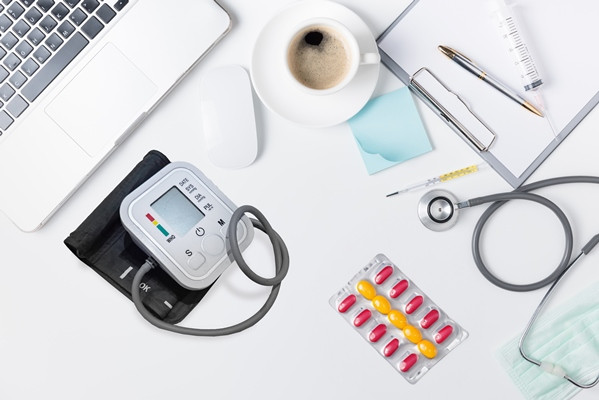Penyakit Paru Obstruktif Kronik (PPOK)
Pendahuluan dan Fakta
The Global Initiative for Chronic Obstructive Pulmonary Disease (GOLD) tahun 2014 mendefinisikan Penyakit Paru Obstruktif Kronik (PPOK) sebagai penyakit respirasi kronik yang dapat dicegah dan dapat diobati, ditandai adanya hambatan aliran udara yang persisten dan biasanya bersifat progresif serta berhubungan dengan peningkatan respons inflamasi kronik saluran napas yang disebabkan oleh gas atau partikel iritan tertentu. Eksaserbasi dan komorbid berperan pada keseluruhan beratnya penyakit pada seorang pasien.
Patofisiologi
Hambatan aliran udara merupakan perubahan fisiologi utama pada PPOK yang diakibatkan oleh adanya perubahan yang khas pada saluran nafas bagian proksimal, perifer, parenkim, dan vaskularisasi paru yang dikarenakan adanya suatu inflamasi yang kronik dan perubahan struktural pada paru. Terjadinya peningkatan penebalan pada saluran nafas kecil dengan peningkatan formasi folikel limfoid dan deposisi kolagen dalam dinding luar salurannafas mengakibatkan restriksi pembukaan jalan nafas. Lumen saluran nafas kecil berkurang akibat penebalan mukosa yang mengandung eksudat inflamasi, yang meningkat sesuai berat sakit.
Pengaruh gas polutan dapat menyebabkan stres oksidatif, selanjutnya akan menyebabkan terjadinya peroksidasi lipid. Peroksidasi lipid selanjutnya akan menimbulkan kerusakan sel dan inflamasi. Proses inflamasi akan mengaktifkan sel makrofag alveolar, aktivasi sel tersebut akan menyebabkan dilepaskannya faktor kemotataktik neutrofil seperti interleukin-8 dan leukotrien B4, tumour necrosis factor (TNF), monocyte chemotactic peptide (MCP)-1, dan reactive oxygen species (ROS). Faktor-faktor tersebut akan merangsang neutrofil melepaskan protease yang akan merusak jaringan ikat parenkim paru, sehingga timbul kerusakan dinding alveolar dan hipersekresi mukus. Rangsangan sel epitel akan menyebabkan dilepaskannya limfosit CD8, selanjutnya terjadi kerusakan seperti proses inflamasi. Pada keadaan normal terdapat keseimbangan antara oksidan dan antioksidan. Enzim NADPH yang ada dipermukaan makrofagdan neutrofil
Gejala Klinis dan Komplikasi
Gejala yang paling sering terjadi pada pasien PPOK adalah sesak napas. Sesak napas biasanya menjadi komplain ketika FEV1 <60% prediksi. Pasien biasanya mendefinisikan sesak napas sebagai peningkatan usaha untuk bernapas, rasa berat saat bernapas, gasping, dan "air hunger".
Batuk bisa muncul secara hilang timbul, tapi biasanya batuk kronik adalah gejala awal perkembangan PPOK. Gejala ini juga biasanya merupakan gejala klinis yang pertama kali disadari oleh pasien. Batuk kronik pada PPOK bisa juga muncul tanpa adanya dahak.
Faktor risiko PPOK berupa merokok, genetik, paparan terhadap partikel berbahaya, usia, hiper-reaktivitas bronkus, status sosioekonomi, dan infeksi.
Diagnosis
Pemeriksaan Fisik
Pada awal perkembangannya, pasien PPOK tidak menunjukkan kelainan saat dilakukan pemeriksaan fisik. Pada pasien PPOK berat biasanya didapatkan bunyi mengi dan ekspirasi yang memanjang pada pemeriksaan fisik. Tanda hiperinflasi seperti barrel chest juga mungkin ditemukan. Sianosis, kontraksi otot-otot aksesori pernapasan, dan pursed lips breathing biasa muncul pada pasien dengan PPOK sedang sampai berat.
Tanda-tanda penyakit kronik seperti muscle wasting, kehilangan berat badan, berkurangnya jaringan lemak merupakan tanda-tanda saat progresivitas PPOK. Clubbing finger bukan tanda yang khas pada PPOK, namun jika ditemukan tanda ini maka klinisi harus memastikan dengan pasti apa penyababnya.
Spirometri merupakan pemeriksaan penunjang definitif untuk diagnosis PPOK seperti yang sudah dijelaskan, di mana hasil rasio pengukuran FEV1 / FVC < 0,7.19 Selain spirometri, bisa juga dilakukan Analisis Gas Darah untuk mengetahui kadar pH dalam darah, radiografi bisa dilakukan untuk membantu menentukan diagnosis PPOK, dan Computed Tomography (CT) Scan dilakukan untuk melihat adanya emfisema pada alveoli. Beberapa studi juga menyebutkan bahwa kekurangan a-1 antitripsin dapat diperiksa pada pasien PPOK ataupun asma.
Pengobatan dan Perawatan
Terapi Farmakologi
A. Bronkodilator
Bronkodilator adalah pengobatan yang berguna untuk meningkatkan FEV1 atau mengubah variable spirometri dengan cara mempengaruhi tonus otot polos pada jalan napas.
• ß2Agonist (short-acting dan long-acting) Prinsip kerja dari ß2 agonis adalah relaksasi otot polos jalan napas dengan menstimulasi reseptor ß2 adrenergik dengan meningkatkan C-AMP dan menghasilkan antagonisme fungsional terhadap bronkokontriksi. Efek bronkodilator dari short acting ß2 agonist biasanya dalam waktu 4-6 jam. Penggunaan ß2 agonis secara reguler akan memperbaiki FEV1 dan gejala (Evidence B). Penggunaan dosis tinggi short acting ß2 agonist pro renata pada pasien yang telah diterapi dengan bronkodilator long acting tidak didukung bukti dan tidak direkomendasikan. Long acting ß2 agonist inhalasi memiliki waktu kerja 12 jam atau lebih. Formoterol dan salmeterol memperbaiki FEV1 dan volume paru, sesak napas, health related quality of life dan frekuensi eksaserbasi secara signifikan (Evidence A), tapi tidak mempunyai efek dalam penurunan mortalitas dan fungsi paru. Salmeterol mengurangi kemungkinan perawatan di rumah sakit (Evidence B). Indacaterol merupakan long acting ß2 agonist baru dengan waktu kerja 24 jam dan bekerja secara signifikan memperbaiki FEV1 , sesak dan kualitas hidup pasien (Evidence A). Efek samping adanya stimulasi reseptor ß2 adrenergik dapat menimbulkan sinus takikardia saat istirahat dan mempunyai potensi untuk mencetuskan aritmia. Tremor somatic merupakan masalah pada pasien lansia yang diobati obat golongan ini.
• Antikolinergik Obat yang termasuk pada golongan ini adalah ipratropium, oxitropium dan tiopropium bromide. Efek utamanya adalah memblokade efek asetilkolin pada reseptor muskarinik. Efek bronkodilator dari short acing anticholinergic inhalasi lebih lama dibanding short acting ß2 agonist. Tiopropium memiliki waktu kerja lebih dari 24 jam. Aksi kerjanya dapat mengurangi eksaserbasi dan hospitalisasi, memperbaiki gejala dan status kesehatan (Evidence A), serta memperbaiki efektivitas rehabilitasi pulmonal (Evidence B). Efek samping yang bisa timbul akibat penggunaan antikolinergik adalah mulut kering. Meskipun bisa menimbulkan gejala pada prostat tapi tidak ada data yang dapat membuktikan hubungan kausatif antara gejala prostat dan penggunaan obat tersebut.
B. Methylxanthine
Contoh obat yang tergolong methylxanthine adalah teofilin. Obat ini dilaporkan berperan dalam perubahan otot-otot inspirasi. Namun obat ini tidak direkomendasikan jika obat lain tersedia.
C. Kortikosteroid
Kortikosteroid inhalasi yang diberikan secara regular dapat memperbaiki gejala, fungsi paru, kualitas hidup serta mengurangi frekuensi eksaserbasi pada pasien dengan FEV1 <60% prediksi.
D. Phosphodiesterase-4 inhibitor
Mekanisme dari obat ini adalah untuk mengurangi inflamasi dengan menghambat pemecahan intraselular C-AMP. Tetapi, penggunaan obat ini memiliki efek samping seperti mual, menurunnya nafsu makan, sakit perut, diare, gangguan tidur dan sakit kepala.
Terapi Farmakologis Lain
• Vaksin :vaksin pneumococcus direkomendasikan untuk pada pasien PPOK usia > 65 tahun
• Alpha-1 Augmentation therapy: Terapi ini ditujukan bagi pasien usia muda dengan defisiensi alpha-1 antitripsin herediter berat. Terapi ini sangat mahal, dan tidak tersedia di hampir semua negara dan tidak direkomendasikan untuk pasien PPOK yang tidak ada hubungannya dengan defisiensi alpha-1 antitripsin.
• Antibiotik: Penggunaannya untuk mengobati infeksi bakterial yang mencetuskan eksaserbasi
• Mukolitik (mukokinetik, mukoregulator) dan antioksidan: Ambroksol, erdostein, carbocysteine, ionated glycerol dan N-acetylcystein dapat mengurangi gejala eksaserbasi.
• Immunoregulators (immunostimulators, immunomodulator)
• Antitusif: Golongan obat ini tidak direkomendasikan.
• Vasodilator
• Narkotik (morfin)
• Lain-lain:Terapi herbal dan metode lain seperti akupuntur dan hemopati) tidak ada yang efektif bagi pengobatan PPOK
Terapi Non-farmakologis Lain:
1. Rehabilitasi
2. Konseling nutrisi
3. Edukasi Terapi Lain
4. Terapi Oksigen
5. Ventilatory Support
6. Surgical Treatment (Lung Volume Reduction Surgery (LVRS), Bronchoscopic Lung Volume Reduction (BLVR), Lung Transplantation, Bullectomy
Referensi:
1. Soeroto AY, Suryadinata H. Penyakit paru obstruktif kronik. Ina J Chest Crit and Emerg Med. 2014; 1(2):83-8.
2. F Khairani. Penyakit paru obstruktif kronik (PPOK) [Internet]. Available from: http://eprints.undip.ac.id/43859/2/FATHIA_KHAIRANI_G2A009079_BAB_2_KTI.pdf





